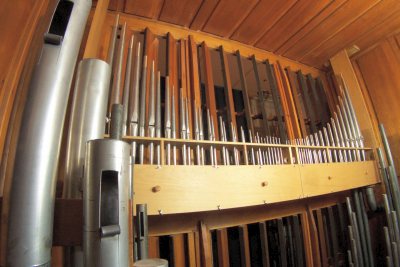Inside The Pipe Organ at High Street: Swell Pipes
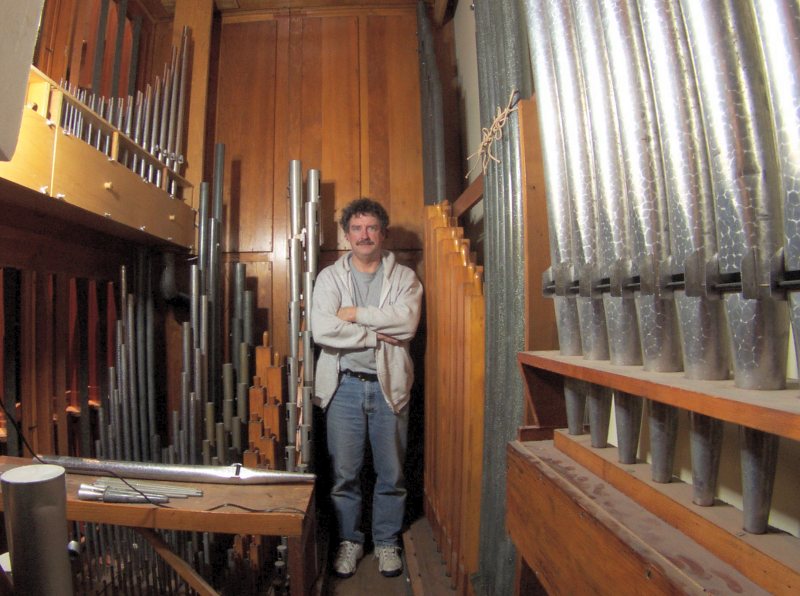
The 572 pipes of the swell division are played using the top of the organ's two keyboards. These pipes are all contained in a big box the size of a small room. To get a sense of scale, here’s me standing in the swell box. The sanctuary is to my right; the wall on my left is the very front of the church. The shiny, slightly tapered pipes to my right belong to the “Flügel Horn” stop. On my left are the longest pipes for the various swell stops. The pipes high up to my right belong to the “Nazard”, which was added to the original organ in 1992 and sits on its own air supply. The new “Italian Flute” stop was installed a year after this picture was taken; we have pictures of it below. |
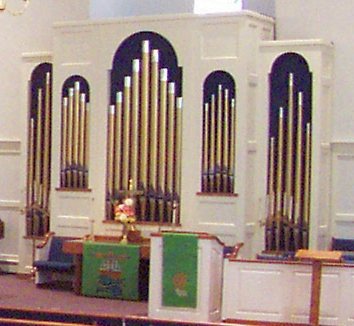
|

|
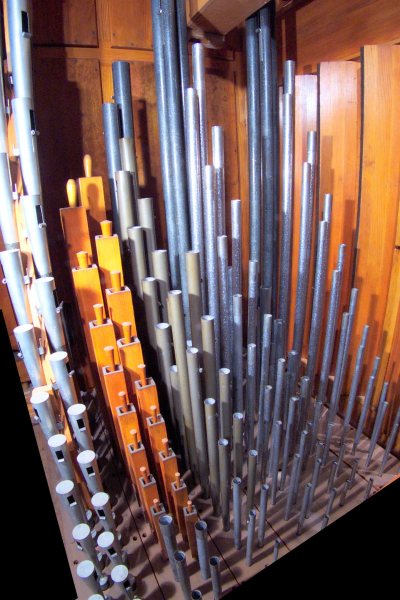
|
In the left hand picture, the sanctuary is to the right. You can see some of the swell's shutters.
Beginning on the left side are pipes of the 8' Flugel Horn (the metal pipes with notches cut near the tops), followed by the square, wooden pipes of the 8' Gedeckt (they have the curious handles on the tops), then the 4' Flute, the 8' Voix Celeste, the 4' Viola, and the 8' Salicional. The longest pipes of these stops are on the back wall of the swell box; you can see them to my left in the top picture. Soon after the organ was installed at High Street, two new stops were added. The Nazard was placed on its own air supply high in the swell, seen in the picture below, and to my right in the top picture:
|
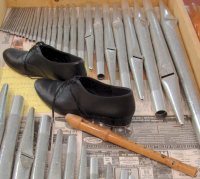
|
We are very grateful for the addition of another stop just added in 2008. This new 2' "Italian Flute" adds so
many delightful capabilities.
Here are the new pipes before installation. I put my organ shoes and a recorder in with them for a sense of scale.
Click the picture for a bigger view.
|
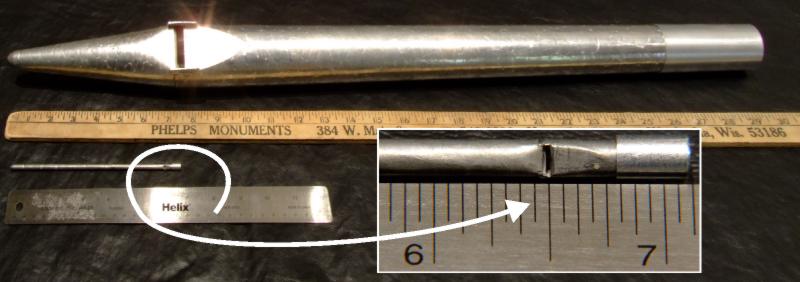
The biggest and the second-smallest of the new set of pipes, next to rulers for comparisons. The actual speaking length of the biggest is about 2'; that of the 2nd-smallest seems to be about 5/8" (see inset). Note the tiny "sleeve" on the top of the little pipe: it slides up and down to lower and raise the pitch ever so slightly (for tuning) (all the pipes have these tuning sleeves). The bulk of the little pipe is in its "foot", the length that goes from the bottom of the pipe up to the mouthpiece.
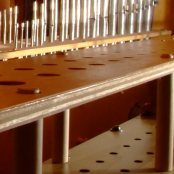
|
The new pipes are on their own windchest next to the Nazard. Here's a picture of
that new windchest, awaiting the actual placement of pipes.
Click the picture for a bigger view.
Note there are two sets of holes: At the bottom of the picture is
the "toe-board" with holes where the pipes will rest.
The pipes get their wind through these holes from the windchest just underneath.
Higher up is the rack, with another set of holes that keep the pipes standing up.
|

|
Here's Organ Builder David Wallace putting the last of the new pipes in place. Well, maybe it's David.
Click the picture for a bigger view that shows David is indeed
about to finish the job. After a quick tuning, we were soon enjoying the beautiful new sound offered by
this wonderful 2' Italian Flute stop.
|
|
Return to Chip's Home Page
Return to High Street Organ Main Page |
© 2009 by Chip Ross Associate Professor of Mathematics Bates College Lewiston, ME 04240 |
